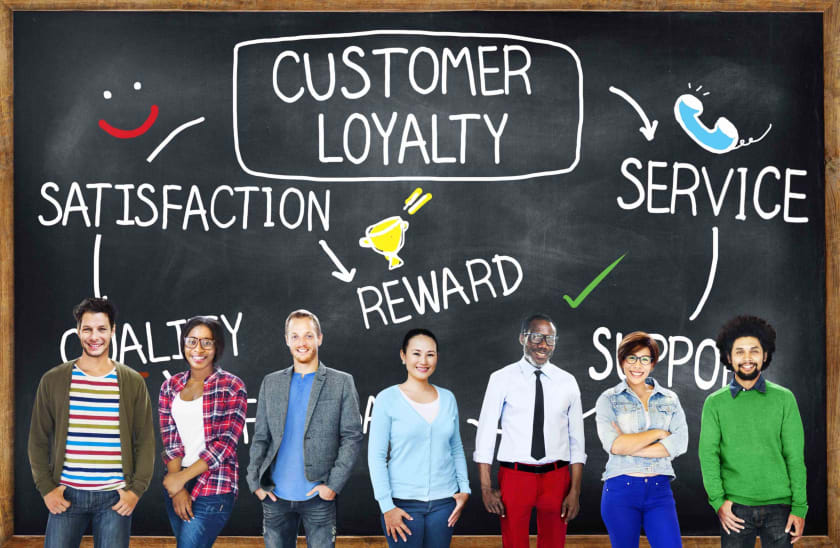How Category Management Can Increase Customer Loyalty



Introduction
Everyone seeks loyalty in a relationship, whether personal or professional. After all, who wouldn't want to be surrounded by faithful individuals? This dedication is highly regarded in business and will help a retailer grow.
If retailers desire loyal customers, they must put in a lot of effort to develop an emotional connection with them. Retailers must meet or exceed customers' expectations for their products and the shopping experience they deliver to gain their loyalty. Category management is one of the proven strategies for doing this.
But then, how does one go about doing it? What other methods may a shop use to guarantee its customers' loyalty?
They must fulfill the needs of their customers in terms of purchases and give them a fantastic shopping experience. It also entails providing them with a one-of-a-kind shopping experience they cannot get anywhere else. How will they accomplish this? The response and solution to it is category management.
What is Category Management?
Retailers must occasionally try new tricks and techniques in a competitive world to wow their clients. One strategy is to make an effort to comprehend how customers shop - to design the environment better and put the right products in the ideal locations. This process is known as category management, and it frequently helps retailers retain clients for a longer time.
Individual product categories are managed as independent business units to maximize sales and profit for the various types while ensuring complete customer satisfaction. When men's, women's, and children's products are categorized and addressed separately in the fashion industry, for example, the business may be better able to serve the clients and satisfy them while also recognizing which areas require more concentration and, consequently, more money.
So, how exactly should a business implement the category management technique?
A merchant can adopt good category management in their company by following seven steps.
- Product categorization – dividing the products into modest groups of similar things
- Defining category roles – assessing the significance of each category to the company
- Category optimization – prioritizing the top products while eliminating the subpar ones
- Store clustering – combining like-minded retailers for more efficient logistical and management needs
- Space allocation – distributing each product's area appropriately
- Adjacencies – Putting goods next to those that will generate sales
- Planogram – Putting together a visual floor plan that shows where and how much room is needed for each item in the shop
Now that merchants know what category management is and how to use it, it's time to understand how it may help them win, boost consumer loyalty, and encourage return visits to their stores.
Effective ways to drive customer loyalty

1. Display products in their exact location
This strategy can significantly help a retailer with multiple stores or outlets and bring in more customers. If the retailer maintained the same pattern of positioning similar products in the same area in each shop or outlet, the customer would know where to go once they arrived at the store. The consumer won't have to worry about going to the same store twice because they all operate similarly.
Retailers might employ floor plans or blueprints to guarantee that the inventory is placed correctly throughout the store. This falls within the planogram method of category management, and experts agree that it consistently maps the items accurately.
A customer would unquestionably be satisfied after experiencing such a wonderful retail atmosphere.
2. Localizing the assortment plans
A shop can best satisfy a consumer by ensuring that the product is available when and where it is needed. If that occurs, the retailer will eventually win their loyalty for life, and they will never shop at another store or brand again.
If you are wondering what assortment planning is, it's the process of choosing the selection of products that will be on sale in specified locations and at specific times. Even so, it does not imply that the shop will stock all its showrooms with the same items. Instead, it calls for first localizing the assortment plan and then comprehending the client, even if that involves making some adjustments in two stores.
For instance, it could be desirable for a fashion company with outlets in both India and the UK to provide ethnic clothing options for their customers just before the festival season in India rather than making any modifications at the UK store. This entails determining what customers need at that particular time and season and adjusting their store accordingly.
3. Visual merchandising
The right product must be selected, placed in the proper location, and the store's layout must all be decided upon to satisfy the consumer. But what ties everything together is the retailer's strategy for merchandising, sometimes known as visual merchandising.
The visual appeal of the goods is what draws customers in first. The consumer doesn't try to purchase the item until after looking at it. The same is true for brands or stores; if a shop wants customers to return to its location repeatedly, it must produce a stunning visual impact that will last.
Advertising, showing promotional marketing gimmicks, beautifully showcasing various things, retail fixtures, the kind of dummies used in the case of a fashion store, retail, and even window displays are all examples of how it may be done. This could be on the store's exterior or interior.
Customers are more likely to return to a store—nearly 80% of the time—if it is friendly and pleasant. Every time a consumer comes in, the business may earn their loyalty and ultimately win their unwavering commitment to the brand by offering fresh and exciting surprises.
4. Provide value for money
Well, there would hardly be any wealthy or poor customers who wouldn't look for the most cost-effective products for themselves. If the retailer can master the category management strategy and product pricing, they will have a customer for life. The customer cannot look ahead in quest of a good brand.
Brands like H&M and Zara have carved out a niche in the Indian fashion industry by regularly engaging with their clients and providing a wide selection of affordable apparel options.
Conclusion
Following the proper technique can help grow the customer base and earn loyalty. Every merchant needs to offer their customers an unparalleled shopping experience.
The category management strategy chosen by retailers can make or break their clientele. The system and policy should adapt to customer behavior, purchasing power, current trends, and market competitors. The retailer must take proper actions at the right time and place if they want to keep a customer for a long time.

Fashinza is your go-to manufacturing, design, and delivery partner. We offer simple sample request processes, real-time production monitoring, and quality control that is driven by data. Visit our website to speak with professionals.



















